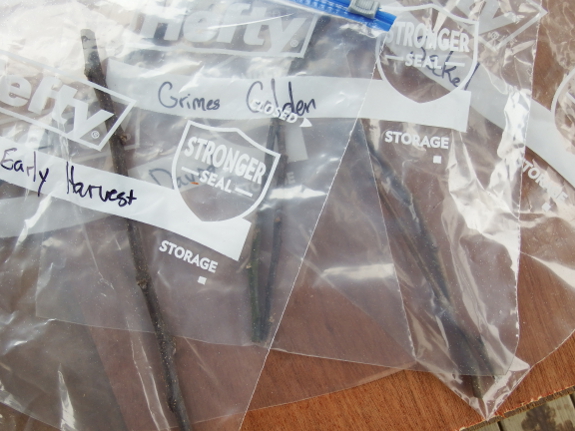
Pear rootstock compatability

My scionwood swaps this year are intended to expand our pear varieties in preparation for a planned high-density planting.
To that end, I'll soon be receiving Shinko, Leona, Potomac, Maxine,
Moonglow, and Blake's Pride scionwood, and I recently mailed out
heirloom apple and pear scionwood to pay back my pear sources. I won't
go into more details about swapping in this post because I've written
previously about how to match yourself up with other scionwood swappers, along with the basics of how to turn your found scionwood into new trees. Suffice it to say that scionwood swapping is easy, cheap, and fun!
When it comes to grafting
that scionwood onto roostocks, though, pears can be trickier to graft
than their appley cousins because some pear varieties aren't compatible
with certain rootstocks (especially the quinces that used to be used as
dwarfing rootstocks for pears). Luckily, the introduction of OHxF (Old
Home x Farmington) rootstocks, which are in the same species as the
European pear (Pyrus communis)
while still providing some dwarfing characteristics, make the
incompatability issue less pressing. Asian pears, on the other hand, are
often grafted onto more vigorous rootstocks in the species Pyrus betulaefolia, but I'm hoping that my one Asian pear (Shinko) will do okay on OHxF 513 like the rest of my new trees.
I know, I know --- too much plant geekery for certain readers. But I'll
bet you'll enjoy the pretty pictures of pears dripping off our dwarf
trees in a few years! Imagining the eventual fruits resulting from this
year's swaps is how I lull myself to sleep on winter nights.
Want more in-depth information? Browse through our books.
Or explore more posts by date or by subject.
About us: Anna Hess and Mark Hamilton spent over a decade living self-sufficiently in the mountains of Virginia before moving north to start over from scratch in the foothills of Ohio. They've experimented with permaculture, no-till gardening, trailersteading, home-based microbusinesses and much more, writing about their adventures in both blogs and books.
Want to be notified when new comments are posted on this page? Click on the RSS button after you add a comment to subscribe to the comment feed, or simply check the box beside "email replies to me" while writing your comment.

We just bought our homestead,(an old farm) and discovered two pear trees of unknown variety. They are not super old like the several apple trees here, which are probably some heritage variety, and definitely not on dwarfing rootstock! is there any way to figure out what varieities these pears are? The trees look strong and healthy and i look forward to harvesting some fruit next summer
Yep, it will be exciting to see what develops here. Three old apple trees, and two pears. I dont think the pears are so old, but the apples are pretty ancient. I hadnt thought of top working them... great idea! It will be a few years before they are all pruned down to a reasonable size. By then we will know whats good and whats not. We are planting some new trees also. thanks.